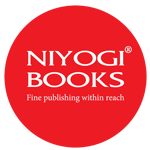The Dawn of Online/Digital Magazines
Not long back when the consumption of digital media was still modest and the consequences of its proliferation in other countries not unfamiliar, one could see the clouds of its revolution looming over our traditional media. The cloud burst and the giants sailed, and while some learnt to swim, the partial washout made way for many to begin and succeed. Such is the tale – as also of the others – of the rise of digital media. A platform whose mere initiation would once be halted by the issues of funding and distribution, left little chance for the naives to hit and try, and for decades its limit and reach was clutched in the hands of the giants. Yet the dominance moves with the demand.
The ‘partial’ and ever increasing shift of magazines from news-stands to online that began with the easy reach of smart-phones has now the thrust of Digital media and its facets, with JIO’s propulsion to the internet connectivity and demonetisation being the worthy initiators. Among those who predicted such a shift was the then nineteen year old Journalism student from Symbiosis – Kaartikeya Bajpai. Understanding the potential of a platform, whose success eliminated the needs of surplus money and contacts, Kaartikeya and a group of other passionate undergraduates stared The Bombay Review, an online international literary magazine that now has a readership base in more than 120 countries.
‘Journalism for me was always a passion, what I really wanted to be was a writer. As a young aspiring writer, I noticed the severe lack of literary magazines in India, online or print. And being published in literary magazines is a stepping stone towards getting your first book published,’ shared Kaartikeya with Niyogi Books. The bi-monthly magazine, whose current nineteenth edition featured eleven poems and three short stories, although peaks its readership in the age bracket of 25-35, its potential access confines to no age. ‘It is always beautiful, when an aspiring 85 year old woman from Bandra attends our events and says, “I don’t know email and internet, so I will ask my son to send my stories to you for your perusal.”’ said Kaartikeya. There’s no denying that the objectivity of the parallel comparison between a physical magazine and an online magazine could be questioned on the grounds of feel and aesthetics, the points often argued on for case of an ebook and a physical book. Nevertheless, such a factor has not deterred the online magazines from venturing into the popular literature festivals of India. Has The Bombay Reviewalready been to any? ‘Oh we have been in most,’ reveals Kartikeya.
It is quite possible that the next to wake in the dawn of online magazines could be the literary awards dedicated to online magazine and its content, following a surplus increase in the online readership surveys and rankings. Such a point needs a mentioning for it shall be the need of the hour once the torrent of online magazines – now that the medium is in reach of everyone –shall dominate the traditional ones. Its dominance is inevitable to not induce some bad, unrefined literature and its easy access could consequently affect the literary standards.
The other aspect of this point reflects in Kaartikeya’s vision through this platform. ‘I am trying to give young writers a platform to get published in and polish their skills, before they are confident enough to attempt a book.’ Fair enough, for our nation is witnessing a significant rise in the passion for reading and writing and who knows, somewhere the online literary platforms such as The Bombay Review, The Little Magazine and Katha among the others might already be serving as training grounds for the next Indian-International bestseller. Through the dawn of the online magazines, only time will tell the fate of the traditional ones; however the clash may be, it’s the good content that must win.

